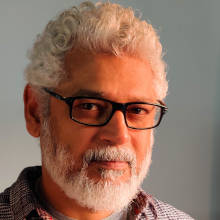The final of four briefings to set context for the Masterclass series on The World in 2025, held on Friday, 31st January 2025, 6:30 pm and Friday, 7th February 2025, 6:30 pm. Read Briefing #1, #2, and #3 here.
What should we do? That is perhaps the one question that pops up in many boardroom conversations these days. “We never heard so much of geopolitics in corporate strategy meetings,” a business consultant remarked during a recent seminar organised by the Institute of South Asian Studies of the National University of Singapore in Delhi on the defining challenges of the century for India and its neighbours.
In fact, the worry permeates to individuals and families rattled by the rapid changes in 2024, particularly in the US and Europe. The first two weeks of the Donald Trump presidency have sent giant shockwaves through the world. He and his billionaire pals promise to unwind and wreck several domestic and global institutions built over decades of hard work. And India, which has steadfastly stayed with the American bandwagon from the turn of the century but also depends on international institutions for its geopolitical space, is justifiably concerned as a new power rises in its neighbourhood.
Eagle on a hunt
Much water has flowed down the Potomac since Trump’s previous presidency. The bonhomie of Howdy Modi in Houston and later Trump’s visit to India, even as Covid-19 was beginning to make its impact, seems like a distant past even if it was only five years ago. India’s national security advisor, home minister, and the second richest businessman can enter the US only at the risk of getting arrested. Big US investors who were making a beeline to Indian startups and emerging companies have taken a breather. India’s tax and tariff policies have spooked businesses in general. This is not to say that everything is downhill. There have been some advances in defence and intelligence cooperation. The two countries signed iCET, an agreement that would help India participate in futuristic technology development. The two countries are closer to each other than ever before.
The future of the relationship will, however, entirely, depend on the political sagacity of the Indian leadership and negotiating skills of its diplomatic corp. To their credit, they are not leaving any stone unturned. They began hedging their bets and cultivating relationships early. That helped pave the way for India’s foreign minister S Jaishankar to be the first counterpart newly minted US secretary of state Marco Rubio met after Trump’s inauguration. Rubio’s first multilateral engagement was the meeting of the QUAD, which includes India, and is the US counterbalance to China in the Indo-Pacific.
Prime Minister Narendra Modi will be among the first leaders to tour Washington. The two leaders consider each other good friends but Trump has let it be known that he will keep friendships aside when it comes to business, especially when the person across the table does not have much leverage. That means India should be prepared to give a lot and be content with little in return. Even if it actually doesn't give away much, it should seem so publicly—a tough balancing act for the Indian leadership whose foreign policy choices are sometimes determined by domestic dividends. It has already indicated its unqualified willingness by readily agreeing to take back illegal immigrants and tweaking some levies in favour of US products.
Himalayan task
Unlike the US, however, India has to contend with another superpower with which it shares a geographically perilous and disputed 3,500 km border. China and India fought a war in 1962 and had a major military standoff over territorial claims in Galwan in the icy Himalayan heights in 2020. A detente finally happened in January this year, yet the relationship is fraught with historical mistrust, plain economic and military fears, and water sharing.
China’s approach to India in recent years has blown hot or cold relative to its equation with the US. Former foreign secretary Shyam Saran has pointed out how after the Global Finance Crisis of 2008-09, China, witness to the US’s financial meltdown, cooled on its behavioural promises made to India. It warmed up again during the Trump administration when the US president went after Beijing.
China looks at India, justifiably to an extent, as a country unable to innovate and compete in the tough modern world. It prides in the might of the state to deliver security and prosperity to its people while India values being beholden to its free, dignified citizens in a way that often is a challenge to decision making. While Beijing celebrates state success above all else, New Delhi proudly embraces even individuals’ achievements as its own. This fundamental difference in the countries’ national psyche is unlikely to go away.
In the immediate future, however, India has to sort out its economic dependency on Chinese imports, which is also creating a gaping hole in its external account. That also leads to the question of whether India can offer itself as a supply chain destination to the world. It will also have to balance demands from the US administration, which is now filled with China hawks, and its own Asian backyard, which is increasingly coming under the dragon’s shadow.
European danza
While India has been trying to align its economic model with that of the US since 1991, the influence of the non-US West has always held it back. Perhaps that is because Indian politics is largely based and practiced on the European socialist model. The friction between the two often creates budgetary headaches for the finance minister and heartburn for ruling dispensations.
The values-driven European approach also keeps it at the forefront of regulation, which is often seen as bad for business. The latest point of contention between India and Europe is the Carbon Border Adjustment Mechanism, better known as border tax.
The perversity of the current geopolitical situation is such that the Trump administration’s approach to climate change and diversity, equity, and inclusion favours India in terms of buying time. This is not to say that India should or can afford to skip these issues but merely that it may create headroom for it to better tailor its response and robust mechanisms to them than something unrealistic being imposed on it.
Fraught neighbourhood
India faces instability across its eastern, western, and northern borders. Sri Lanka in the South has stabilised after elections but New Delhi worries about Chinese presence and influence there. Irritants have cropped up in the relationship after the island nation reviewed an energy project of the Adani Group.
The conglomerate’s Bangladesh electricity supply contract is also under scrutiny after that country went through a violent regime change last year. Relations with the interim administration have acquired an edge of uncertainty since Sheikh Hasina was unseated and sought refuge in India.
On the western border, Pakistan is in tumult. It may take a few years for its economy to recover. There are also signs of elements inimical to India in that country becoming active again, reflected in the rise of terrorist activity in Kashmir.
Smooth sailing
Perhaps the most significant achievement of the Modi regime has been the bridges it has built in West Asia. It is now close friends with almost all states in the region and it has brought it investments and boosted trade. Its trade pact with the UAE has been a success and also offered many Indian businesses an alternative base of operations. The ambitious India-Middle East-Europe Economic Corridor also holds a big trade promise for India.
The West Asian relationships came handy in paying for India’s oil trade with old friend and backer, Russia. Buying oil from sanctioned Russia was India’s demonstration of its strategic autonomy, the key principle of Indian foreign policy under Narendra Modi. Whether it will be able to sustain it while Trump remains a White House resident is a moot question.
After all, former US ambassador to India Eric Garcetti had wryly remarked last year: "In times of conflict, there is no such thing as strategic autonomy.”
Dig Deeper
[Read] What Trump 2.0 means for India, January 2025, Gateway House (5 mins)
[Read] India’s limited options vis-a-vis China, February 2025, Deccan Herald (4 mins)
[Read] The fire in India’s neighbourhood, September 2024, Founding Fuel (10 mins)
[Read] Negotiating the India-China Standoff: 2020–2024, December 2024, Carnegie India (1 hr 10 mins)



